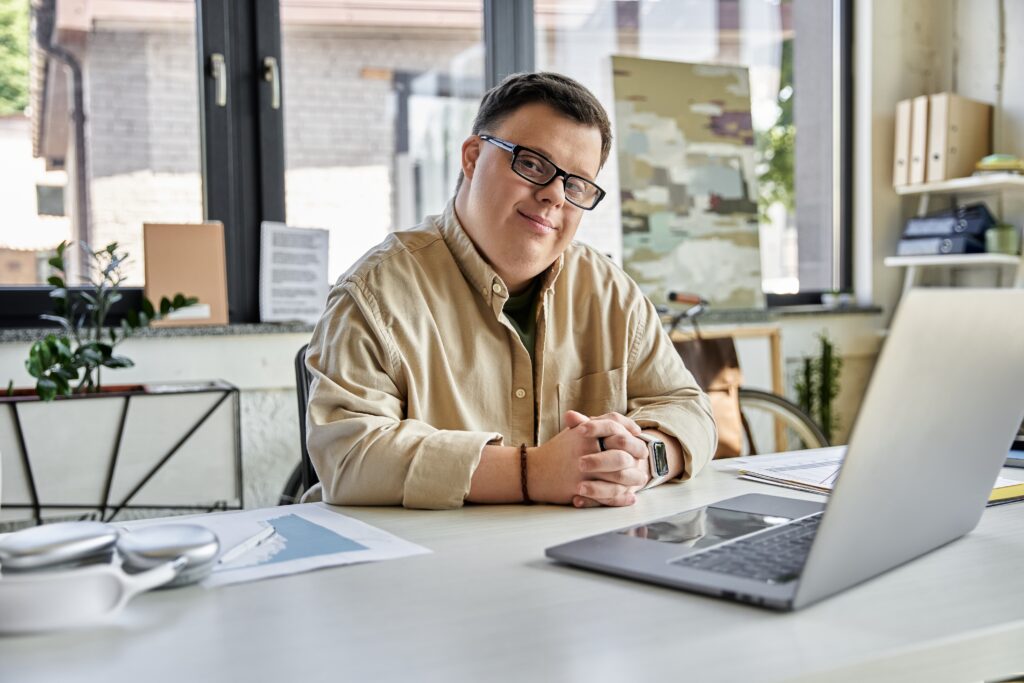TV BRA’s studio bursts with shocking pink, reflecting the favorite color of reporters Emily Ann Riedel and Petter Bjørkmo. During a visit, Riedel wears a pink top, while Bjørkmo recalls his former pink hair with laughter. He explains he had to change it, joking, “reporters need to look decent.”
The station’s name, “TV Good” in Norwegian, highlights its mission. All its reporters are disabled or autistic, with most having a learning disability. Every week, they produce an hour-long magazine program featuring news, entertainment, and sports. The show airs on TV2 Play, TV BRA’s app, and its website, reaching 4,000 to 5,000 viewers weekly. The presentation uses simple Norwegian and a slower pace, making it easier to follow.
Reporters Shine Across Norway
TV BRA’s ten reporters are spread across Norway, serving as local correspondents. Riedel, based in Stavanger, has learned to balance her vibrant personality with professionalism. “I have to follow the script and not share personal stories—this is about the news,” she explains. Her confidence shines through, even in new experiences like applying mascara for on-camera appearances. “I don’t need it because I’m beautiful,” she says with a smile.
Managing editor Camilla Kvalheim also serves as a makeup artist, playfully agreeing with Riedel’s self-assessment. “But with studio lights, you do look a bit paler,” she notes. Kvalheim and a small technical crew manage production and editing. Reporters face challenges like learning the autocue system, but Kvalheim provides on-the-job training. Her high expectations drive the team to improve. “Look into the camera; this is important,” she advises, offering both correction and praise.
Creating a Professional Newsroom
Kvalheim’s journey with TV BRA started over a decade ago when she was a teacher for people with learning disabilities. Her passion for filmmaking transformed her relationship with students, fostering teamwork. As the project grew, it evolved into a national network with a proper studio. However, resources remain tight. Reporters don’t receive the same pay as peers at other stations, and TV BRA relies on state funding and a weekly show for TV2.
Still, the team’s motivation goes beyond money. For people with learning disabilities in Norway, employment opportunities are limited. TV BRA’s work empowers this community, giving them a platform to advocate for their rights. Bjørkmo’s recent report on a woman denied shopping assistance in Trondheim sparked public debate. His story highlighted the challenges people with severe disabilities face, bringing attention to the issue.
Reporter Svein Andre Hofsø, known for his role in “Detective Downs,” brings humor to his reporting. He’s famous for his playful approach to questioning politicians, seen during a recent election. His wit adds an engaging dimension to the station’s coverage.
On the day of the visit, local lawmaker Silje Hjemdal from the right-wing Progress Party is interviewed by TV BRA’s team. Reporters question her on issues from infrastructure to arts funding. Kvalheim notes that Hjemdal’s support has grown awareness of TV BRA’s mission.
A New Approach to News
TV BRA isn’t alone in its approach. Similar initiatives exist in Iceland and Denmark, and several countries offer simplified “easy news” services. However, few feature reporters with disabilities as TV BRA does. Viewers appreciate this representation and accessibility. “This station is really important for our community,” says fan Anne-Britt Ekerhovd. “They explain things well. Other news channels are too complicated. TV BRA is easier to understand.”
Supporter Espen Giertsen agrees, saying, “They’re doing something special—making TV in a new way.” TV BRA’s reporters understand the weight of their work. Riedel captures this spirit, saying, “If people feel weighed down, I want to lift that burden so they feel accepted.”
